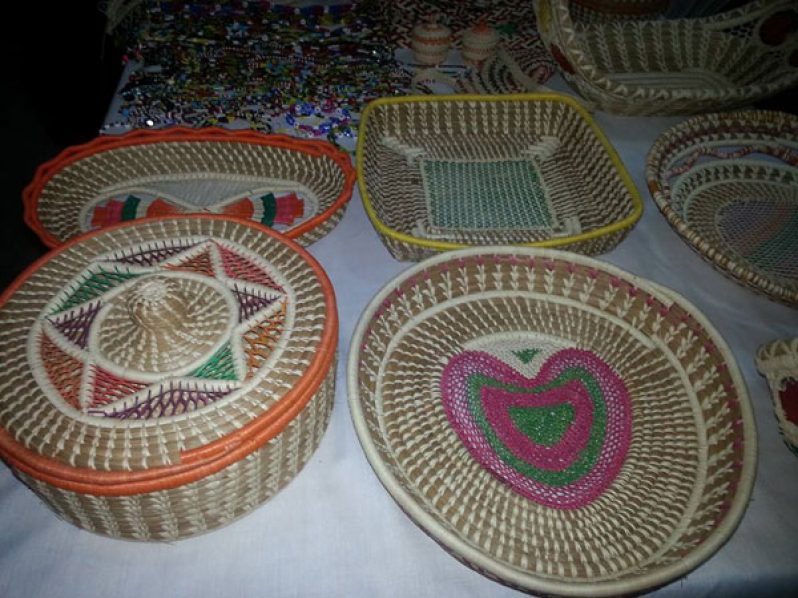THE Amerindians who inhabit Guyana have been making objects with their hands from time immemorial.
They are the descendants of people from India and Africa, who worked and learned about the land; there are the bearers of many other cultural traditions.
These Amerindian artists make beautiful objects using natural materials from jungle, savannah and sea, such as basket work from the ite palm tree and clay pots.
Amerindians live in almost every corner of Guyana, where they bring with them their genuine gift of art.
Amerindian basket work is particularly neat and of a high standard. Materials of different colours are used and skilfully woven to produce patterns of animal or geometrical designs.
Baskets are made for different purposes. Some are also adorned with cotton and feathers. Cassava graters are also made in elaborate designs, the chips of stone being arranged in definite patterns. Working in wood is also an admirable Amerindian skill. Canoes, stools, bows, arrows and other articles are very skilfully done. Head-dresses, ornaments, necklaces, and musical instruments are well finished and often elaborately decorated.
As an illustration of the themes outlined above, rock carvings are the most striking and mysterious example of Amerindian art; they are spread over a wide area of South America, being found locally at Waraputa and Timehri and certain other sites. They consist of human and animal figures and line drawings.
Unlike these carvings, paintings done in red and black pigments on shaded sandstone surfaces are of comparatively recent origin. Here again, various figures are depicted; human hand-prints predominate.
There are also articles made of clay, in very common use, and even today these are used by remoter tribes; pottery decorations are of a high order.
The burial urns used by the interior tribes were constructed very simply and household articles of clay were often decorated with patterns. Some of the coastal regions were famous for decorated pottery.
The pottery of the early and less advanced tribes was plain and simple; as a higher stage of civilisation was reached, much skill was devoted to finishing and decorating.
When the earlier settlers arrived, pottery- making had reached a fairly high level and often the articles were quite artistically decorated. Decoration was either punched, scraped, incised or painted, and often clay figures were added as further decoration.
The musical instruments of the Amerindians were made at the cost of much labour; drums were made of hollowed trunks and the skins of animals, preferably the Howler Monkey. Flutes, rattles and pipes were also used.
Among the Guiana Tribes, the Akawais were most fond of painting various patterns on their bodies and of using ornaments. These habits continue to the present day and can be seen in tribes from the upland region of the Mazaruni.
The warlike tribes of the coast were particularly proud of their clubs, which they spent much time decorating. After an enemy had been felled by a blow with the sharp edge, he was finished off by punching the pointed end into his ear.
Perhaps the greatest skill of the Amerindian was exercised in the art of weaving hammocks; several native fibres were used and hammocks often took several months to finish; decorations consisted of patterns woven with coloured threads and balls of wool.
Among most tribes, basket-making was, and still is the work of the men who are very skilful, turning them out in different shapes and for different purposes.
Ornaments were used particularly during festive occasions and those made of bird skins are rather attractive.
Head-dresses of feathers were used by most tribes and feathers of several colourful birds were used. Unfortunately, they are no longer used by the majority of tribes and the art of making this attractive article is now lost.
The bead aprons in intricate designs are still used by many tribes.
These items are often displayed and marketed by the Ministry of Culture, Youth and Sport, as well as by the Ministry of Amerindian Affairs.




.png)









